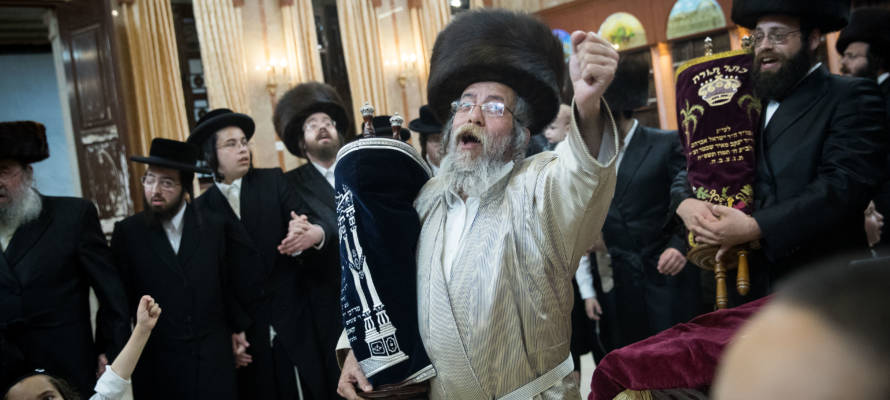The day is very festive in nature as is any Jewish celebration that is held on the completion of a unit of study.
By Rabbi Ari Enkin, Rabbinic Director, United with Israel
The festive holiday of Simchat Torah is the finale to the week-long festival of Sukkot. There is some discussion as to whether Simchat Torah is an independent holiday or whether it is merely a continuation of the Sukkot holiday – but more about that another time.
Simchat Torah celebrates the completion of the annual Torah reading cycle. The entire Torah, the Five Books of Moses, is divided into 54 portions. Each Shabbat a different Torah portion is read; sometimes, two portions need to be doubled up due to the holidays that come with their own Torah readings. After a year, the entire Torah has been completed once more.
Not only is the last Torah portion of the Torah read on Simchat Torah, which is the portion of “V’zot Habracha,” where we read about the death of Moses, but immediately after the reading is completed, the Torah scroll is rolled back to the beginning – Genesis – and begun anew with the story of Creation.
The day is very festive in nature as is any Jewish celebration that is held on the completion of a unit of study. These celebrations are known as “siyumim” (singular is siyum). Simchat Torah, therefore, is the “siyum of siyumim” that the entire Jewish world celebrates at the same time.
As part of the celebrations, all the Torah scrolls that the congregation owns are removed from the ark and are danced with. A prominent component of the dancing is to go in circles around the altar or Torah reading table. These circle dances are called “Hakafot,” and at least seven such circles must be made.
After the dancing, the Torah is then read and completed. It is noted that the dancing and celebrations take place BEFORE the Torah is completed and not AFTER. This may seem “out of order” because celebrations are usually held after “graduation” – not before. This, too, is a topic for another time, but it definetely is something to think about.
As part of the Torah reading on Simchat Torah, everyone is called to the Torah. That’s right, on a regular day, only a number of men participating in the minyan, or prayer quorum, are called to the Torah, but on Simchat Torah, each and every person present is entitled to be called to the Torah and recite the accompanying blessings. Yes, this does make for an extraordinarily long service. Even children are called to the Torah, though children are called up as a group and recite the blessings together in unison.
Food flows freely on Simchat Torah, and often, alcohol as well. It is one of the few times that eating is permitted in the synagogue sanctuary. Kids are given flags to dance with, symboling that our “flag” is the flag of Torah!
Whether your synagogue is holding services indoors this year or outdoors, be sure not to miss the Simchat Torah celebration.

Do You Love Israel? Make a Donation - Show Your Support!
Donate to vital charities that help protect Israeli citizens and inspire millions around the world to support Israel too!
Now more than ever, Israel needs your help to fight and win the war -- including on the battlefield of public opinion.
Antisemitism, anti-Israel bias and boycotts are out of control. Israel's enemies are inciting terror and violence against innocent Israelis and Jews around the world. Help us fight back!




